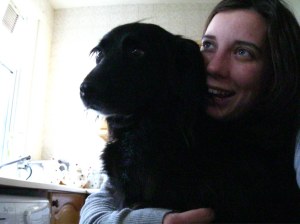Early on in my lecture recording research, I came across a fascinating conflict. Students loved being able to capture something they perceived to be a valuable resource. Staff were worried the act of capture conferred artificial value to the resource. It took us time, but eventually we produced a resource bringing these two camps together, to get them to discuss where the value lay, and we saw a lot of benefits with this approach (this workshop is available for free on the QAA Scotland Focus on Lecture Recording site).
Recently I’ve been exploring student experiences of the last academic year, to find out what we did well and what we could do better. There’s another conflict in there. Some students have suffered immensely this year, their mental health declining, their performance suffering, and experiencing a year of hell. And yet some students are loving the new-found freedom and flexibility hybrid learning has offered them, their mental health has massive improved, they’re doing better in their assessments, and they never want to go back.
Our lecture recording workshop took a lot of work, and I’m very proud of it. As an intellectual exercise, can we do something like this to help our students resolve their disagreements regarding the covid experience?
What should not be a surprise to me is the obvious finding – people are all individuals and experience the world through their own unique lens of wants, needs and desires. We have to start from a position that neither of these experiences are Wrong. People who have suffered have absolutely suffered. And people who have thrived in this time have thrived. Both experiences are valid.
It would be lovely if we could give both camps (and the myriad of camps in between, but this is a blog post so lets keep it simple) their own unique and tailored learning experience. Unfortunately, at least in the vet school, we don’t have the staff required to deliver that unique experience for each student. We have material which needs to be delivered, and we can’t feasibly deliver it in multi-modal approaches. So what choice do we make?
This reminds me of the paradox of inclusivity – the idea that an affordance for one group can be a barrier for another. Say you are hosting an event, and one friend uses a seeing-eye dog. Another friend has a very severe dog allergy. Who compromises to attend the event? What’s fair to ask? We make these kinds of choices every day. When I teach I encourage students to step out of their comfort zone, I ask questions, even though I know it is uncomfortable for some students. I take steps to mitigate the discomfort, but ultimately I deliberately choose to push students whenever I teach. It is not always comfortable, because learning is not always comfortable. I take many steps to create an environment where you can recover from feeling uncomfortable, but I know for a fact they don’t work for everyone. With the tools I have right now, I still have students leaving my teaching feeling uncomfortable and stressed by their learning. So who should we make uncomfortable this coming year?
The coming academic year is set against a backdrop of trauma, loneliness, and discovery. Whatever choices we make, we will be upsetting people. I read editorials fretting about a fractured society, the remotes and the in-presences. As a society, we will need to reckon with this oncoming conflict, and we should start now.
In this time we’ve gained the ability to make life so much more accessible. We have made conferences available regardless of travel cost (and certainly mitigating climate costs). We have made those with chronic illnesses much more capable of managing them as part of their work day. We have freed people.
We have also locked people in tiny boxes we call “student housing”, and kept them from their families. We have not learned their names, or seen their smiles. We have made them pay extra for the ability to connect. We have badly hurt people.
And all of this applies to our staff too. To our families and friends, to the world we are preparing our students for. I don’t believe we can ever go back to what we were, and I worry there may be a mounting sentimentality to the past, conferring a false value to a time that didn’t really exist. If we choose to open up more, to demand face-to-face and international travel, part of that trade-off is going to be more deaths. If we choose to remain cautious, to stay hybrid, we must expect pain for many.
So who do we make uncomfortable? To me there’s an obvious solution: we prioritise the social lives of our students. We make big outdoor, well-ventilated spaces. We close them last. We give up on in-person lectures (although oh how I miss them) to keep the student unions and societies free. We agree that students can stay near their family homes so they can spend that precious time with their people. I believe we need to make a sacrifice here – but we all need to make that sacrifice. My proposal would be that we don’t go back to offices and lecture halls just yet. But we make sure that no one spends 6 months in a single dorm-room ever again.
If we all take a little bit of the discomfort, maybe we can avoid the cruelty of the last academic year.
